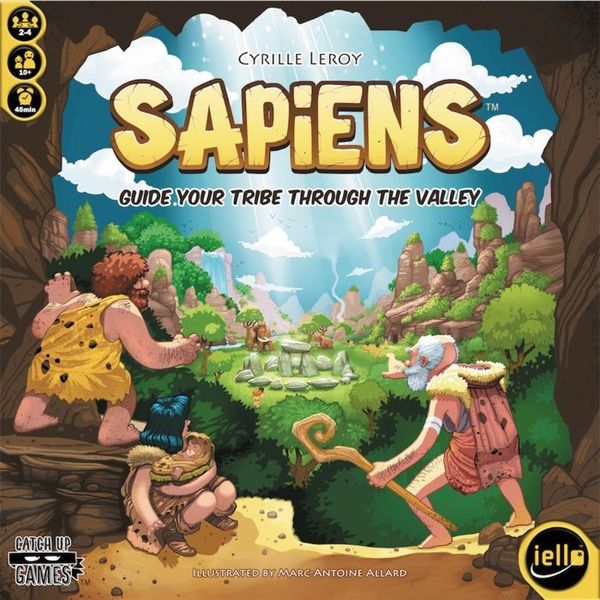Sapiens (2015) Board Game
Sapiens is a board game released in 2015 by designer Marc-Antoine Allard. The game is set in prehistoric times and focuses on players building their tribes and competing for resources. With a playtime of 45 minutes and suitable for ages 10 and up, Sapiens can accommodate 2 to 4 players.
Game Components of Sapiens
How To Setup Sapiens
To set up Sapiens, players start by shuffling the 63 Tribe Tiles and placing them face down in a stack. Depending on the number of players, a specified number of tiles are removed (12 for 2 players, 18 for 3 players, and 6 for 4 players), and five tiles are dealt face up to form the common pool. Each player randomly takes two half-boards to form their Valley Board and fills the eight squares on the edge with their Mountain Tokens. Players draw four Tribe Tiles to form their personal pool and place their scoring tokens on the Scoretrack. Finally, they each take their Fight tokens and other necessary components.
Gameplay Mechanics and Game Objective
Player Experience
In Sapiens, players experience a mix of strategic planning and interactive gameplay. Each player develops their own area, but special actions allow for direct interaction with opponents, adding a layer of competition. The game requires balancing food and shelter points, as the player with the highest score in the weaker domain wins. This balance ensures that players cannot focus solely on one aspect, making the game challenging and engaging.
Pros
Cons
Personal Thoughts on Sapiens
Sapiens is an excellent game for those who enjoy tile-laying and area management games with a prehistoric twist. It is particularly suitable for families and casual gamers who appreciate strategic depth without overwhelming complexity. The game’s unique scoring mechanism, where the weaker domain must be strong, adds a layer of strategy that keeps players engaged and balanced in their resource management. However, players who prefer simpler rules or are averse to direct interaction mechanisms might find some aspects of Sapiens less appealing.
We are supported by our audience. When you purchase through links on our site, we may earn an affiliate commission, at no extra cost for you. Learn more.

